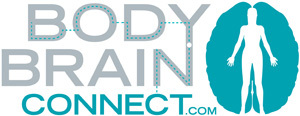My focus at the April 23rd Annual Society for the Neural Control of Movement (NCM) Conference in Puerto Rico was on ways in which movement teachers like myself could collaborate with researchers, graduate students and postdoctoral students on the cutting edge of brain science. I was the only movement educator at the NCM conference; I hope that might change in the future. Here are further key discussions to consider in the months ahead.
How does the motor cortex (M1) create and/or code movement in the body?
In most textbooks the M1 is described as an understood brain region that controls movement. The reality is that neuroscientists are still a bit unclear as to exactly how this happens. I walked away with three major ideas about how the motor cortex controls movement; this is still in dispute.
1. Does M1 exert specific muscle control?
This idea posits that M1 exerts control over many specific muscles individually. Evidence to support this idea comes from looking at the 5th layer of cells in the M1 cortex and how they create muscle activation read by electromyography recordings.
2. Does M1 control muscles through synergies?
A muscle synergy is defined as “a pattern of co-activation of muscles recruited by a single neural command signal.” The neural control of movement is created by single neural commands that activate a group of muscles for a specific movement goal. For example, to pick up a coffee cup, a group of muscles coordinate together at the shoulder, elbow, and wrist to lift the coffee cup and bring it to your mouth.
3. Does M1 control for force and velocity?
The final argument looked at whether M1’s role is to control force and velocity. This is an important consideration. The proper force and velocity modulate action, keeping you from splashing coffee on your face with too much velocity or crushing the paper cup with too much grip force strength.
Most important to me: Our understanding of something as basic as how the motor cortex controls movement is still up for debate. This is what makes the study of the neural control of movement so exciting.
Robotics: An End Users Experience
 A very large population of NCM conference attendees related the neural control of movement for spinal cord injury (SCI) patients to robotics. These researchers generally seem to come from mathematics and engineering backgrounds. I listened to many speakers talk about robotic models and prototypes. Their hypothesis: if you can create a robot to learn movements, you can better understand human movement.
A very large population of NCM conference attendees related the neural control of movement for spinal cord injury (SCI) patients to robotics. These researchers generally seem to come from mathematics and engineering backgrounds. I listened to many speakers talk about robotic models and prototypes. Their hypothesis: if you can create a robot to learn movements, you can better understand human movement.
As a Pilates teacher, I had a different approach. I wondered, How would you train the SCI patient to use the robot efficiently? What design parameters would you put in place? Perhaps thinking about how someone might think about controlling a robot would help to construct a user-friendly robot experience. (I explore this subject in my blog post How to improve turning thought to action: Ideas for BrainGate2 study in Nature I mentioned three ways to improve robot to human interface from a movement educator’s perspective.)
And I kept thinking, Wouldn’t it be a good idea to think about the end user’s perspective, and how you might train the SCI patient would use the robot? For example, it might be important to create models that show the control of the robot from the first_person perspective. This allows the SCI patient a direct experience to control the movement of the robot controlled arm. Seeing the robot’s actions from the third-person perspective requires the SCI patient to flip around the movements in her mind, which would make it less like the real life situation of using the robot.
Ideas for Future Growth: Meeting of the Bodies & Brains
My conclusion after the conference: To help find the answers about the neural control of movement and how robotics can be improved for end users, it would most likely take an interdisciplinary village and a common language. I plan to continue to learn how neuroscience can inform movement practice. I hope neuroscientists and engineers will look at how movement educators teach movement. I hope they agree that a Pilates instructor attending a neuroscience conference to get the conversation going is a good start!






une idee de créer un robot adéquate morphologiquement pour réaliser tous les mouvements Pilates en démonstration
pour permettre au professeur de mieux gèrer la partie humaine , correction et contrôle!!!
Hi, interesting article and so wonderful that you got the chance to go to this conference!
I am a Pilates Instructor and practise Fascial Manipulation as developed by Luigi Stecco. He writes ” with regards to the organisation of movement the brain is only capable of programming peripheral movements, whereas muscular fibres are only capable of contracting. Stimulation of the myofascial unit by a specific nervous impulse is essential to bring about movement of a specific body part. Muscle fibres effectuate movement only within their own particular context and it is the fascia that derteminse the form as well as the direction of a muscle. If the consistency of the centre of coordination of the fascia varies, then the muscular fibre’s ‘frame of reference’ is changed and the resulting motion will be different”
Thought you might find this interesting:)
Mariska
Hello Mariska, Yes, this is an interesting point. One way to think about it is the nervous system creates the intention or goal to move while the muscles merely take orders. “Fascial intelligence” is a very hot topic right now in the mind body community. It will be interesting to see what science and research might have to say about this idea.
Anne